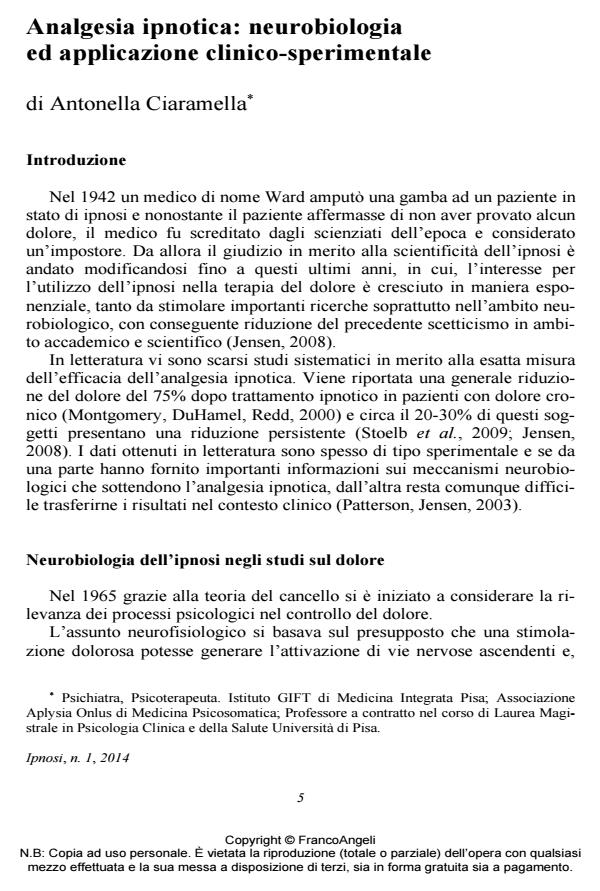Analgesia ipnotica: neurobiologia ed applicazione clinico-sperimentale
Titolo Rivista IPNOSI
Autori/Curatori Antonella Ciaramella
Anno di pubblicazione 2014 Fascicolo 2014/1
Lingua Italiano Numero pagine 16 P. 5-20 Dimensione file 99 KB
DOI 10.3280/IPN2014-001001
Il DOI è il codice a barre della proprietà intellettuale: per saperne di più
clicca qui
Qui sotto puoi vedere in anteprima la prima pagina di questo articolo.
Se questo articolo ti interessa, lo puoi acquistare (e scaricare in formato pdf) seguendo le facili indicazioni per acquistare il download credit. Acquista Download Credits per scaricare questo Articolo in formato PDF

FrancoAngeli è membro della Publishers International Linking Association, Inc (PILA)associazione indipendente e non profit per facilitare (attraverso i servizi tecnologici implementati da CrossRef.org) l’accesso degli studiosi ai contenuti digitali nelle pubblicazioni professionali e scientifiche
After an exam of the neurobiological mechanisms of hypnotic analgesia, the author deepens indications and hypnotic techniques used in the treatment of chronic pain. A major emphasis is given to the relationship between hypnotic susceptibility and efficacy of hypnotic analgesia and, in this context, the author explains some results of neurobiological and clinical literature. Besides, the author shows some results of its clinical experience through the application of a protocol called: The "Structured Phenomenological Hypnotic Protocol" (SPHP).
Parole chiave:Ipnosi, dolore, suscettibilità ipnotica, neurobiologia, fenomenologia ipnotica, analgesia.
- Placebo and hypnosis in the clinical setting: Contextual factors in hypnotic analgesia Antonella Ciaramella, in American Journal of Clinical Hypnosis /2022 pp.223
DOI: 10.1080/00029157.2021.1954872 - Hypnotic analgesia in chronic pain: role of psychopathology and alexithymia Antonella Ciaramella, in American Journal of Clinical Hypnosis /2023 pp.299
DOI: 10.1080/00029157.2022.2161868
Antonella Ciaramella, Analgesia ipnotica: neurobiologia ed applicazione clinico-sperimentale in "IPNOSI" 1/2014, pp 5-20, DOI: 10.3280/IPN2014-001001